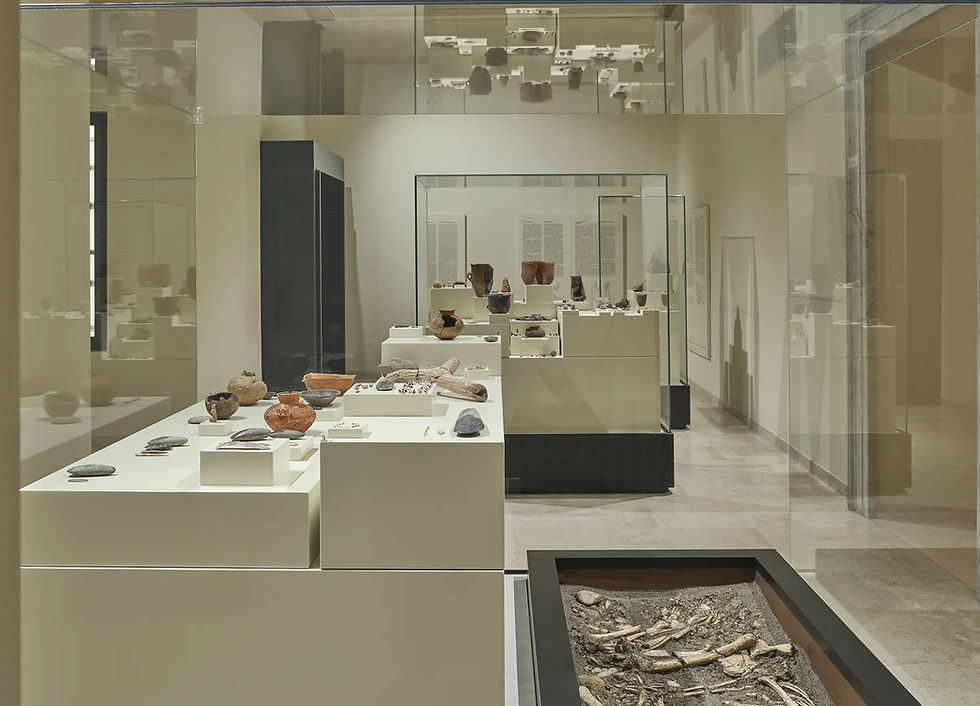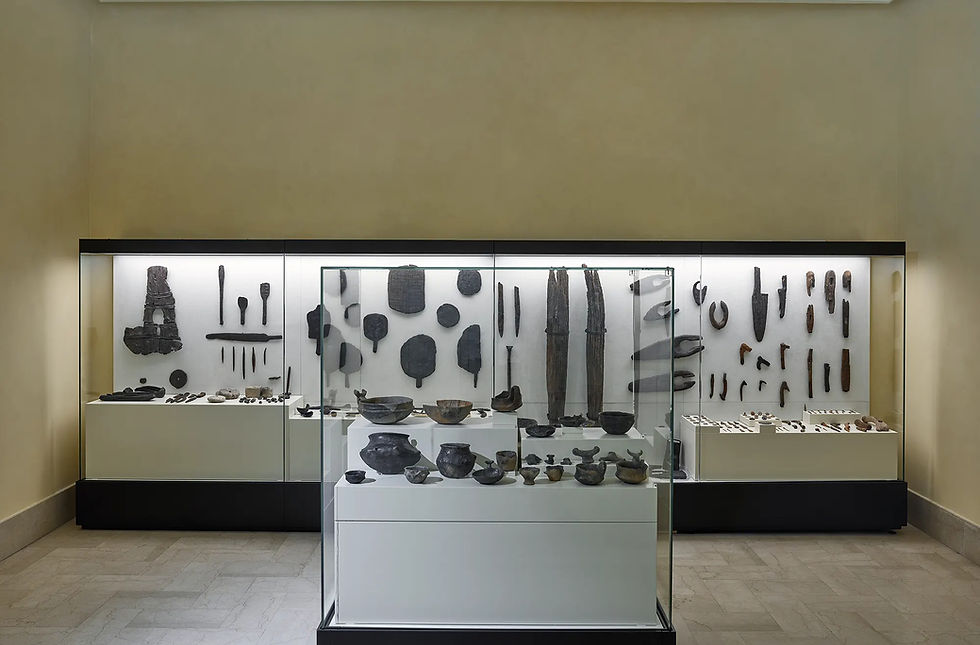NATIONAL ARCHAEOLOGICAL MUSEUM: one of the oldest in Italy
- Raffaella Cattelani

- Apr 29, 2023
- 4 min read
The two floors of the Museum offer a rich overview of the cultures of Italy from prehistoric times to the Roman and ancient Egyptian eras and, at the same time, allow us to retrace the history of the formation of the Museum and its collections.
Located within the PILOTTA MONUMENTAL COMPLEX , the Archaeological Museum was founded in 1760 as the DUCAL MUSEUM OF ANTIQUITIES by order of Don Filippo di Borbone to house the finds from the excavations of the Roman city of Veleia (a town in the province of Piacenza).
Over the next two centuries it was enriched with the acquisition of important Egyptian, Etruscan and Roman finds .
EXHIBITION SECTIONS
In 2023, the last major renovation work started by the then appointed director Simone Verde was completed .
The new itinerary, arranged chronologically from the Paleolithic to the early Middle Ages, winds in a circular fashion exclusively on the first floor.
The west wing of the Palazzo della Pilotta, more or less corresponding to the rooms previously housing offices and libraries, was used for extra-territorial collections, consisting of pottery and other Greco-Etruscan materials, coins and Egyptian artefacts.
FROM THE PALEOLITHIC TO THE METAL AGE
The oldest traces of human presence in the Parma area are collected, dating back to between 70,000 and 50,000 years ago, up to thousands of years later, in the Upper Paleolithic (after the end of the last glaciation which occurred approximately 13,000 years ago).

THE TERRAMARE
Between the end of the 17th and 16th centuries BC, in the middle of the Bronze Age, dozens of villages, the so-called “terramare” , began to flourish in the Po Valley, with peculiar structural characteristics and a homogeneous heritage of artefacts. The villages, which extended from one to over 10 hectares, were on average 5/6 kilometres apart, with an economy based on a rather advanced agriculture and livestock farming.

THE IRON AGE, BETWEEN ETRUSCANS AND CELTS
After the collapse of the Terramare civilization, the Emilian plain seems to have gone through a long period of depopulation. The first traces of a renewed occupation date back to the 7th century BC and belong to communities of Etruscan culture. In this new phase, the population was no longer concentrated in large villages, but distributed in small groups of huts linked to the agricultural exploitation of the territory. These groups were mainly positioned along travel routes, for example those in the valleys, or near fords, so as to combine agricultural activity with the control of traffic routes.

VELEIA. THE STATUARY CYCLE
The Roman city of Veleia , located in the first Piacenza Apennines, came to light starting in 1760, when Duke Don Filippo I of Bourbon began official excavations. Among the first findings are the twelve statues in Lunense marble depicting the members of the imperial Julio-Claudian family. Lined up on a podium along the walls, they were intended to underline the political loyalty of the small community towards the court. The relationship between the latter and the town was made even closer by Calpurnius Piso - brother-in-law of Julius Caesar - who was the patron saint of Veleia .

VELEIA. THE ROMAN CITY
In 1760 the first excavation campaign was opened in the area where, in 1747, the Tabula Alimentaria had been found, the largest bronze inscription from the Roman era known to date, containing the provisions of the emperor Trajan for the establishment of a mortgage loan ( Alimenta ) in favour of needy children.

THE TERRITORY OF ROMAN PARMA
The Roman colony of Parma was established in 183 BC with the function of controlling the Apennine valleys populated by the Ligurians still at war with Rome: each of the 2000 colonists, who arrived with their families from central Italy, was assigned 8 iugera of land (about 20,200 m2). This is how the "centuriations" system was born, which divided the territory into square lots of about 710 m on each side, delimited by roads, rows of trees and canals. The agricultural settlements, usually two per centuria, were initially located in the areas closest to the city and then spread up to 900 m above sea level and in the lower plain up to the Po.

GREEK AND ETRUSCAN-ITALIC FINDS
The so-called historical collections include works not linked to the Parma area and which came to the Museum through gifts, acquisitions of entire collections or even individual purchases on the antiques market, mostly made in the first half of the nineteenth century. The Greek vases come mostly from Vulci (9th-7th century BC), while Magna Graecia is represented by a large number of Apulian vases (from today's Puglia).
Among the Etruscan materials there are both pottery, with jugs, chalices and cups in bucchero, and terracotta objects (votive heads, cinerary urns and urn lids), as well as various bronzes, including refined mirrors, votive statuettes and a splendid Corinthian-type helmet.

THE COLLECTION STATUARY
The group of Roman sculptures comes from the collections of the Gonzaga family of Guastalla and the Farnese family of Rome.
In the vestibule of the Palazzo della Pilotta and in the Gallery are displayed respectively the head of Zeus in Greek marble and the colossi in basanite, found on the Palatine, perhaps in the imperial palace of Domitian. Also of particular interest are the Satyr flutist by Lysippos, the colossal head of the god Serapis and the portrait of the emperor Lucius Verus.

THE EGYPTIAN COLLECTION
The Egyptian section of the museum was formed mainly between 1830 and 1832, thanks to the acquisition of numerous finds under the direction of Michele Lopez and with the support of Duchess Maria Luigia of Austria .
The collection today consists of approximately 200 pieces covering a period between 2100 BC and the 1st century AD, mostly from Thebes and Memphis. Although relatively limited in quantity, this collection has pieces of notable historical and scientific value, so much so that it is still the object of interest and visits by scholars of international standing. This collection offers a significant overview of the culture and funerary practices of ancient Egypt, enriching the experience of visitors interested in this ancient civilization.

For up-to-date information on opening hours and visiting methods, it is advisable to consult the official website of the PILOTTA MONUMENTAL COMPLEX https://complexopilotta.it/museo-archeologico/

Comentários